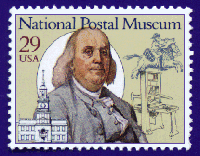|
Later, when electric batteries were discovered, scientists naturally assigned the direction of the flow of current to be from (+) to (-). A century after that electrons were discovered and it was suddenly realized that in metal wires the electrons were the ones that carried the current, moving in exactly the opposite direction. Also, it was an excess of electrons which produced a negative electric charge. However, it was much too late to change Franklin's naming convention
A Simple Experiment
Ben Franklin's kite experiment observed atmospheric electricity, of which lightning is just the most extreme form. The electric charge originates in thunderheads (cumulo-nimbus clouds) by a process is described in the last part of a file on the Van de Graaff generator of static electricity. In thunderstorms and below them the electrification is strong and lightning occurs, but it spreads over large areas, though at distant points it gets weak.
A simple experiment for observing this electricity was described on a web-list by Larry Cartwright, retired physics teacher in Michigan:
"If you like experimenting with everyday stuff (what the heck would you be doing teaching physics if you didn't like experimenting, right?), find a building with ungrounded aluminum siding and connect a small neon lamp between the siding and a grounded pipe or rod. The lamp flashes whenever the siding reaches a certain potential w/respect to ground. (Faster flashing = higher electrification)
You might get some surprises about the kinds of weather that produce
substantial charges on the building's surface. A few years back, a
person was killed at a park near here by a freak lightning strike on a
practically clear and sunny summer day.
You can get the little NE-2 lamps at electronics parts suppliers such as
Radio Shack, at a hardware store (getting harder and harder to find
traditional hardware stores), and in the tools/hardware department of
any well-equipped discount Mart or home building supplies center.
Multi-megohm resistors can be used to decrease the sensitivity of the
lamp if you wish.
By the way, definitely do not put yourself between the siding and the ground on
a cumulonimbus kind of day!"
| 